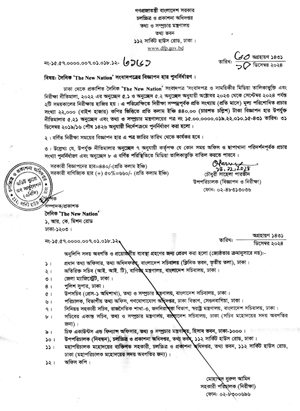Major AKM Shakil Newaz (Retd) :
The Hill Tracts region in Bangladesh has long been a point of cultural diversity and political complexity, but recently it has become a hotspot for escalating tension. At both the national and international levels, there are forces at play that are stirring unrest, and the situation requires urgent attention and strategic management.
The primary drivers of unrest at the national level revolve around the long-standing grievances of the tribal communities in the Hill Tracts. These issues, if not addressed swiftly, could create serious challenges for Bangladesh’s national unity and stability.
Historically marginalized and often feeling excluded from the political and economic processes of the country, certain tribal communities in the Hill Tracts have developed a strong sense of identity separate from the rest of Bangladesh.
This desire for self-determination is not new, but it has been gaining traction in recent years, fueled by perceived injustices and lack of acknowledgement.
For many of these communities, the Hill Tracts represent more than just a geographical region; it is a homeland with its own distinct cultural and historical identity.
The failure to properly integrate these communities into the national framework has allowed a kind of separatist ideas to fester. Their push for independence represents a direct challenge to Bangladesh’s territorial integrity, making this issue a matter of national urgency.
In the Hill Tracts, there are indications that the Bangladesh Awami League (BAL), with possible collaboration from a neighboring country, is preparing for counter-revolutionary activities aimed at maintaining control over the region. These efforts appear to be aimed at suppressing tribal unrest and reasserting state authority in the face of growing opposition.
Rumors are swirling that the deposed dictator Sheikh Hasina may establish a temporary government in Agartala, Tripura, with the support of neighboring forces. Such a move would allow the party to continue its operations from a safe haven, potentially using militant activities in the Hill Tracts as a way to destabilize Bangladesh and eventually regain power.
This possibility raises serious security concerns, as it could lead to a protracted conflict in the region with far-reaching consequences for national stability.
Already, there are reports that high-ranking BAL leaders have fled to Agartala, and the prospect of them regrouping there to launch militant operations is a real threat. This development underscores the importance of addressing the root causes of the unrest in the Hill Tracts before the situation spirals out of control.
This dynamic is especially troubling because it suggests that the conflict in the Hill Tracts is not just a local issue, but one that is becoming increasingly tied to broader political struggles within Bangladesh. The potential involvement of external actors only adds to the complexity of the situation, making it harder to resolve through dialogue and negotiation alone.
Beyond the national level, the unrest in the Hill Tracts is also being driven by the interests of international power players. These actors are seeking to exploit the instability in the region for their own strategic purposes.
There is growing speculation that international actors may be attempting to revive the objectives of the Burma Acts or the 1942 Plan. These plans, which date back to the colonial era, were designed to reshape the geopolitical landscape of South Asia, including the Hill Tracts.
While the specifics of these plans remain unclear, their revival would likely involve redrawing borders and realigning alliances in ways that could have profound implications for Bangladesh.
International powers may see the unrest in the Hill Tracts as an opportunity to further their own interests, using the region as a pawn in larger geopolitical games. This makes it even more critical for the Bangladeshi government to resolve the conflict quickly and decisively, before external actors can gain a foothold in the region.
The strategic importance of the Chittagong region, which lies adjacent to the Hill Tracts, is another factor driving international interest in the unrest. Chittagong is home to Bangladesh’s largest port and serves as a key gateway for trade and military operations in the region. Any instability in the Hill Tracts could easily spill over into Chittagong, disrupting both commerce and security.
International power players are keenly aware of the region’s importance, and they are likely to use the unrest in the Hill Tracts as a way to gain influence in Chittagong and beyond. This could lead to a dangerous escalation of tensions, with multiple external actors vying for control over the region.
Another growing concern is the possibility that neighboring countries, such as India and Myanmar, may seek to integrate parts of the Hill Tracts – specifically Khagrachari and Rangamati – into their own territories. This would represent a significant territorial loss for Bangladesh and could lead to further destabilization in the region.
Such ambitions are not without precedent, as both India and Myanmar have long-standing territorial claims in the area. If these countries were to act on their ambitions, it could trigger a major regional conflict with far-reaching consequences.
The unrest in the Hill Tracts is the result of a complex interplay between national discontent and international geopolitical maneuvering. On the national level, the failure to address the legitimate grievances of the tribal communities, particularly the unfulfilled promises of the 1997 Peace Accord, is a key driver of the conflict. On the international level, external actors are seeking to exploit the instability in the region for their own strategic purposes.
To prevent further escalation, the government of Bangladesh must engage in meaningful dialogue with the tribal communities. At the same time, it must remain vigilant against external interference and work to maintain national unity in the face of growing challenges. However, if the current course is allowed to continue, the region could become a flashpoint for conflict with far-reaching consequences for Bangladesh and the wider region.
(The writer is former Director, Operation and maintenance, Bangladesh Fire Service and Civil Defence).




